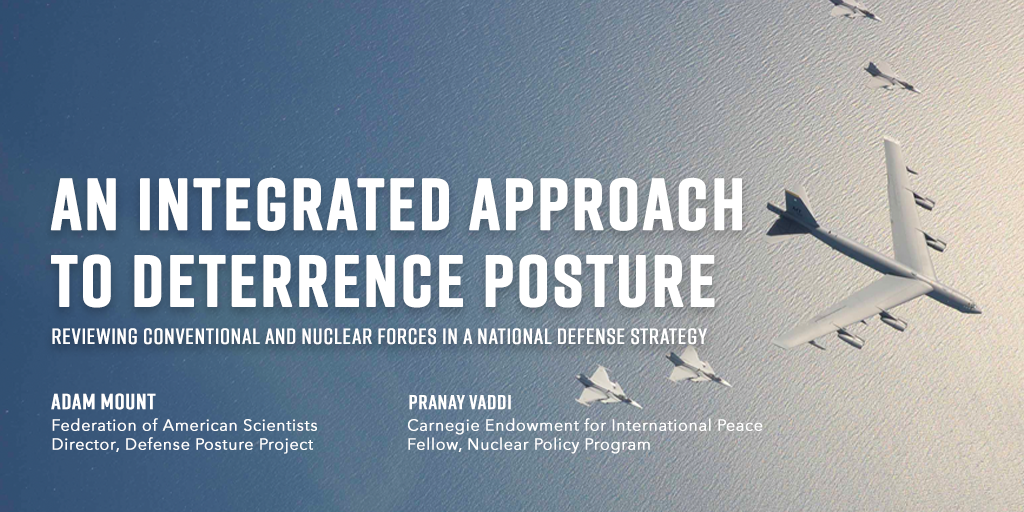
The primary deterrence challenge facing the United States today is preventing aggression and escalation in limited conventional conflicts with a nuclear-armed adversary. It is a difficult conceptual and practical challenge for both conventional and nuclear strategy—but existing Pentagon strategy development processes are not equipped to integrate these tools to meet the challenge.
At the conceptual level, two strategy documents guide U.S. deterrence policy. The 2018 National Defense Strategy (NDS) described how multiple layers of conventional forces can help to deter aggression by nuclear-armed adversaries while the 2018 Nuclear Posture Review (NPR) proposed new nonstrategic nuclear options to enhance deterrence of aggression and nuclear use. The two documents each present a strategy for deterring nuclear-armed adversaries in regional conflicts and serve as valuable public diplomacy tools to explain U.S. strategic thinking and intentions to allies and partners, potential adversaries, the public, and Congress.
However, it is not clear how the strategies described in the NDS and the NPR relate to each other. What is the respective role of nuclear and conventional weapons in managing escalation in a limited conflict? How can conventional weapons deter and respond to an adversary’s limited nuclear employment? As nuclear forces consume an increasing proportion of Pentagon procurement budgets, how should the services balance competing nuclear and conventional priorities? While these questions of national policy go unanswered, commands are also struggling with a number of practical challenges with operating conventional forces under the shadow of nuclear escalation. Are combatant commands prepared to conduct nuclear signaling and employment operations during a limited conventional conflict, given complex logistical and strategic challenges? How can conventional forces operate effectively in an environment that may be degraded by nuclear use?
The U.S. should continue its voluntary moratorium on explosive nuclear weapons tests and implement further checks on the president’s ability to call for a resumption of nuclear testing.
This missile launch provides an opportunity to further examine China’s nuclear posture and activities, including the type of missile, how it fits into China’s nuclear modernization, and where it was launched from.
Known as Steadfast Noon, the two-week long exercise involves more than 60 aircraft from 13 countries and more than 2,000 personnel.
Increasing women in leadership roles is important for gender parity and bringing in new perspectives, but it does not guarantee peace.